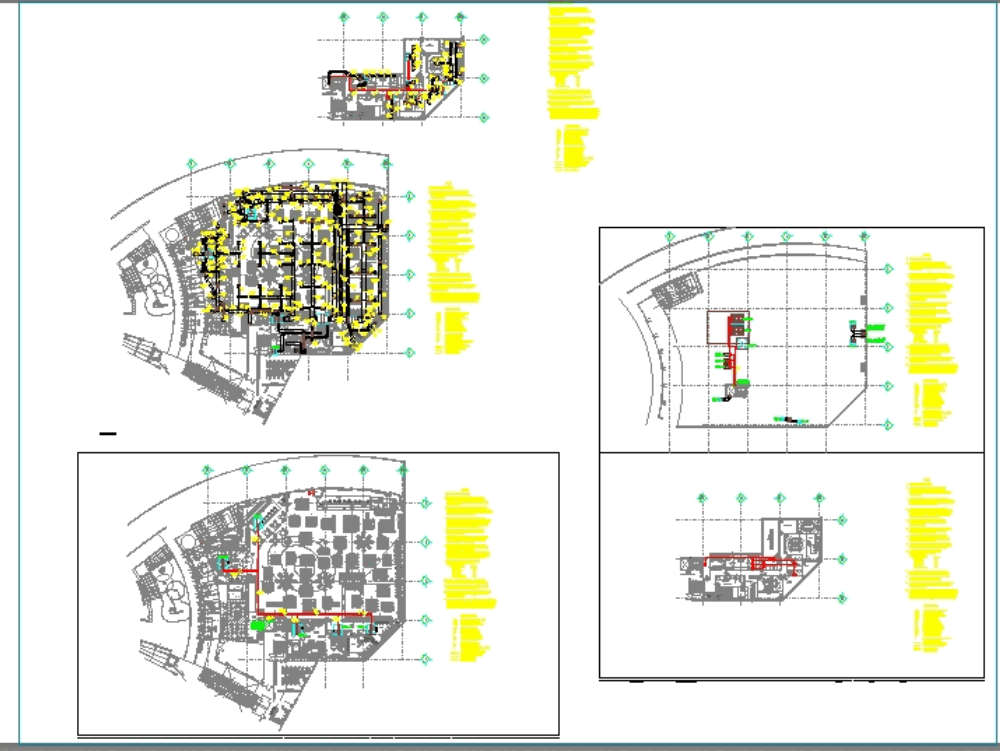VRF systems have been used in Asia and Europe for almost twenty-five years. With a higher efficiency and increased controllability, the VRF system can help achieve a sustainable design. NYE VRF System Design It’s no surprise that variable refrigerant flow systems are really complex machines. After all, these systems are the ones that control the entire cooling and heating system in a building. Variable refrigerant flow ( VRF ) systems are gaining in popularity and are used as an enhanced version of multi-split systems , featuring simultaneous heating and cooling as well as heat-recovery capabilities.
The specific design of a VRF system varies based on application. In general, VRF technology provides the ability for multiple indoor units or zones to operate on the same system. Midea variable refrigerant flow ( VRF ) system design , same as variable refrigerant volume ( VRV ), has wide range of operation, high reliability and comfort.
All fittings and valves are converted to an equivalent length of pipe when calculating piping and system size. VRF Piping Layout Software. VRF is a superior way to heat and cool any space, providing improved humidity control, individual set points per indoor unit, and a very quiet comfort experience.

This course provides an overview of VRF system technology. What are the main disadvantages of the VRF System? Is VRF right for my building? What is the difference between VRF and VRV?
Proprietary VRF controls and systems design also lock out competition if small revisions are required. A side-by-side comparison of hydronic systems and variable refrigerant flow ( VRF ) systems is a relevant case in point. Appealing for its ductless technology and claims of superior energy performance, recent studies dispute the effectiveness of VRF , concluding that hydronics outperform VRF in terms of energy performance. ASHRAE compliance — A VRF system that has a refrigerant leak is a serious concern that can pose a danger to the health and safety of room occupants. VRF lets architects, engineers and builders be more creative.
With the versatility of VRF, it won’t be the HVAC system that prevents you from dreaming bigger or building taller. One VRF system can cover everything from your structure’s smallest workspace to its most vast spaces like, lobbies and auditoriums. This ability to control the amount of refrigerant that is provided to fan coil units located throughout a building makes the VRF technology ideal for applications with varying loads or where zoning is required. The design of a VRF system begins with understanding the space layout. The orientation of the building and the seasons during which peak loads occur must be considered.
The type of load (heating or cooling) and the distribution of loads into zones will depend on the intended use of the space. VRF Solutions Built for Your Business Mitsubishi Electric introduced VRF zoning technology to the United States and has continued to advance the category with industry-leading products, training, and support. VRF Heating or Cooling Systems.

The CITY MULTI S series (for small applications) and Y series (for large applications) make use of a two-pipe refrigerant system , which allows for system changeover from cooling to heating, ensuring that a constant indoor climate is maintained in all zones. The all-in-one air conditioning solution for large residences. VRV systems enable individual climate control settings for each zone to provide the utmost in comfort to commercial building settings. Adaptable Design Modular design of outdoor units and wide selection of indoor units ensure system designs that are ideally suited to the environments where they are installed.
Indoor units can be in different modes. These systems provide individual control and are the most versatile of the multi-split systems. Like ductless minisplits, VRFs use refrigerant as the cooling and heating medium.
This refrigerant is conditioned by a single outdoor condensing unit, and is circulated within the building to multiple indoor units.
No comments:
Post a Comment
Note: only a member of this blog may post a comment.